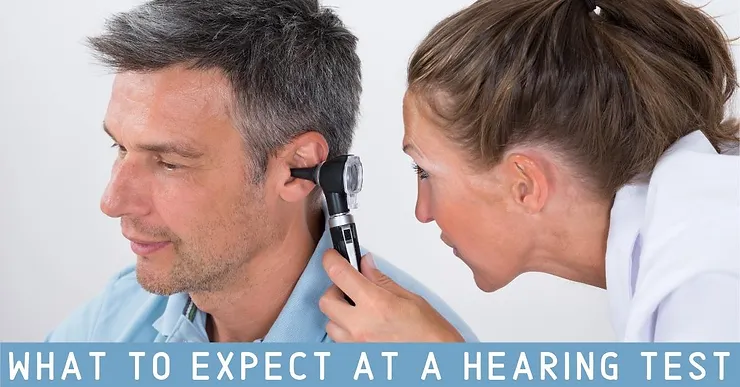
Hearing Test Expectations
“A journey of a thousand miles begins with a single step.”
Though the 6th-century BC Chinese sage Laozi was hardly referring to hearing loss, this proverb can be applicable when thinking about the path to better hearing health. As a first step, a thorough hearing test should be taken; they are easy, painless, and give your audiologist pertinent information about your hearing ability.
It can be difficult to pinpoint your hearing loss as it often happens gradually over an extended period of time. Often friends or family members may ask questions about your hearing before you realize that you have, in fact, been asking people to repeat themselves or listening to the television or radio at higher-than-normal volumes. This could be a sign that a hearing test is in order. A hearing test can also define the type of hearing loss you have and to what degree: conductive, sensorineural, or mixed. If you suspect that you may have a disabling hearing loss, contact our team at Clear Hearing and Audiology.
The information following will provide you with what to expect from a thorough diagnostic hearing examination.
Your Hearing History
When you meet with Dr. Patel, in addition to finding out what concerns you have, getting to know your personal hearing health and medical history will be her first step. This will help her determine if any of your symptoms are inherited or genetic in your family. However, allergies, ear infections, head colds, and even impacted ear wax are medical conditions that may contribute to hearing loss. She may also ask if you’ve had any head trauma, especially around the ears recently, as these types of injuries can lead to temporary or permanent damage to your hearing.
Dr. Patel will ask about your symptoms and how they are adversely affecting your day-to-day life. It is important to share information about your job, social habits, and any hobbies.
Lastly, your audiologist may ask how often you are exposed to loud noises. Are you an avid concertgoer? Do you work in construction? In the largely noisy world in which we live, it’s no surprise that noise-induced hearing loss is very common.
Once the history of your hearing health is discussed, you are ready to take your hearing test!
The Hearing Test
Have no fear: a hearing test is painless and non-invasive. This test is administered in a sound-treated booth which is designed to keep out any sounds that might affect the test and your score. An audiometer will be used to conduct the test and you will be asked to wear headphones or earplugs with wires that connect to it.
Dr. Patel will then give you instructions and begin to administer the test. You will listen to series of tones at different volumes and pitches and raise your hand or press a button. The booth is made to be very quiet so you can concentrate because you should respond to the tone even if you can barely make it out. This portion of the exam is called pure tone audiometry.
Another portion of the hearing test is called speech audiometry, which utilizes speech, recorded or live, instead of pure tones. This exam evaluates the softer speech sounds (threshold) you can hear and understand. Then to see how accurately you understand them, the exam asks you to repeat back the words that are presented at a level far above the threshold.
The Results Are In
Understanding your hearing test results is important for peace of mind and so that you might have a comparative document to measure future hearing tests against. Test results are displayed on an audiogram, a graph that displays the softest sounds you were able to hear at different pitches. The volume is presented on the vertical axis and the pitch of the sound is presented on the horizontal axis.
The results will be measured in decibels of hearing threshold level (dB HL), units that are unique to hearing testing, but are also based on the perception of sound pressure levels across frequencies. A mark can be found at the corresponding frequency on the audiogram for each tone you heard during the hearing test. The left and right ears are represented separately by two different lines and may be very similar or noticeably different.
Clear Hearing and Audiology
If you’ve been struggling with hearing in your daily life, contact us at Clear Hearing and Audiology today. We provide comprehensive hearing tests and are here to help you on your journey to better hearing.
